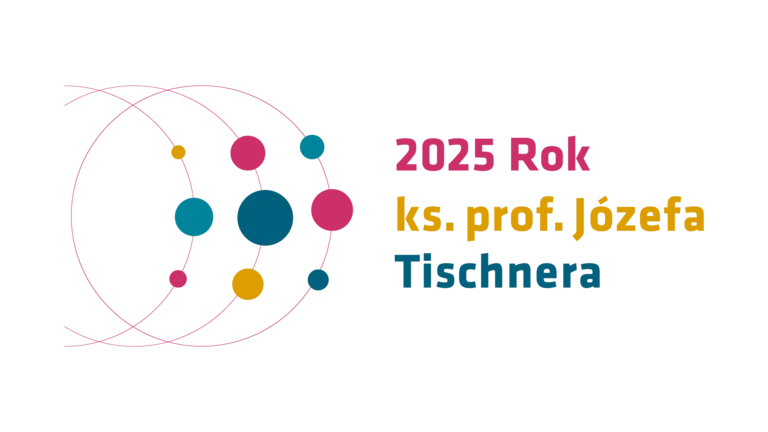Human thought is difficult to grasp — unpredictable and changeable — yet it tends to return, circling around a few fundamental themes or issues. It cannot be confined within predictable schemes or perfect frames. Often, when words fail us, our voice falters, and silence falls — dramatic or barely noticeable. Some writers describe it as the ticking of a distant clock, others as the buzzing of a fly, and still others reach for the ellipsis — three small yet highly expressive dots. For a typographer, the ellipsis is an autonomous sign, something more than just three independent dots placed side by side.
But how to visually represent the elusiveness, boundlessness, and creative independence of thought? How to convey the tension, drama, and extraordinary power of human inspiration? This task seems impossible, yet human thought does not yield to limitations.
An attempt to meet this challenge is the sign — the logo for the Year 2025 of Rev. Prof. Józef Tischner. Not everyone will like it — and that’s not the point.
It is an arrangement difficult to predict, surprising, and — which may irritate some — disorderly. At first glance, the dots seem to form a square, but even a brief analysis reveals it is not a square. We try to find lines connecting the dots, circles, or arcs (parts of circles), but find none. It symbolizes a certain tension of thought, a drama unfolding in life and heart — and thus human reflection. It is also an artistic reference to the ambiguity and boundlessness of the thought of the great Philosopher, one of the Patrons of the Year 2025 — Rev. Prof. Józef Tischner.
Author of the logo:
Seweryn Puchała

